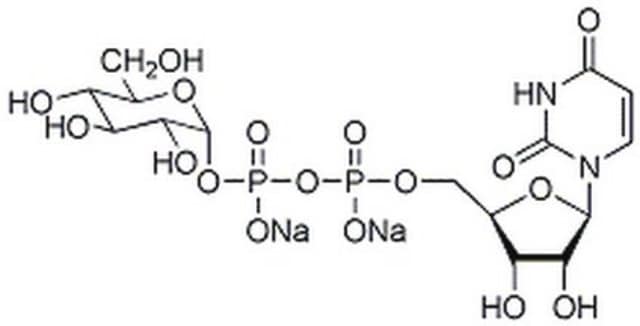774405
(S)-2-Aminobutane-1,4-dithiol hydrochloride
99% (titration)
Synonym(s):
(S)-2-Aminobutane-1,4-dithiol hydrochloride, (2S)-2-Amino-1,4-dimercaptobutane hydrochloride, DTBA, Dithiobutylamine
Sign Into View Organizational & Contract Pricing
All Photos(1)
About This Item
Empirical Formula (Hill Notation):
C4H11NS2 · HCl
CAS Number:
Molecular Weight:
173.73
MDL number:
UNSPSC Code:
12352200
PubChem Substance ID:
NACRES:
NA.22
Recommended Products
Assay
99% (titration)
form
solid
reaction suitability
reagent type: reductant
mp
210-225 °C
storage temp.
2-8°C
SMILES string
Cl.N[C@H](CS)CCS
InChI
1S/C4H11NS2.ClH/c5-4(3-7)1-2-6;/h4,6-7H,1-3,5H2;1H/t4-;/m0./s1
InChI key
HWWPXJZINVJNBM-WCCKRBBISA-N
Application
(S)-2-Aminobutane-1,4-dithiol hydrochloride (DTBA), also known as dithiobutylamine, is a biological reducing reagent with enhanced properties over other commonly used reagents. DTBA was shown to reduce small molecule disulfides 3-5x faster than DTT and was able to reduce (activate) the cysteine dependent protease papain 14x faster than DTT. In addition, due to the presence of the primary amine group, removal of DTBA from mixtures after use is simplified and can be achieved using cation exchange resin.
Dithiobutylamine or DTBA is a new biological reducing reagent with enhanced properties over other commonly used reagents. DTBA was shown to reduce small molecule disulfides 3-5x faster than DTT and was able to reduce (activate) the cysteine dependent protease papain 14x faster than DTT. In addition, due to the presence of the primary amine group, removal of DTBA from mixtures after use is simplified and can be achieved using cation exchange resin.
Signal Word
Warning
Hazard Statements
Precautionary Statements
Hazard Classifications
Acute Tox. 4 Oral - Eye Irrit. 2 - Skin Irrit. 2 - STOT SE 3
Target Organs
Respiratory system
Storage Class Code
11 - Combustible Solids
WGK
WGK 3
Flash Point(F)
Not applicable
Flash Point(C)
Not applicable
Choose from one of the most recent versions:
Already Own This Product?
Find documentation for the products that you have recently purchased in the Document Library.
Customers Also Viewed
Javier Troyano et al.
Inorganic chemistry, 58(5), 3290-3301 (2019-02-13)
Direct reactions under ambient conditions between CuX (X = Br, I) and thiobenzamide (TBA) were carried out at different ratios, giving rise to the formation of a series of one-dimensional (1D) coordination polymers, (CPs) [CuI(TBA)] n (1), [Cu3I3(TBA)2] n (4)
A potent, versatile disulfide-reducing agent from aspartic acid.
Lukesh III, et al.
Journal of the American Chemical Society, 134(9), 4057-4059 (2012)
Mozhdeh Imaninezhad et al.
Bioconjugate chemistry, 30(1), 34-46 (2018-12-19)
Macroporous cell-laden hydrogels have recently gained recognition for a wide range of biomedical and bioengineering applications. There are various approaches to create porosity in hydrogels, including lyophilization or foam formation. However, many do not allow a precise control over pore
Coordination properties of dithiobutylamine (DTBA), a newly introduced protein disulfide reducing agent.
Adamczyk J, et al.
Inorganic Chemistry, 54(2), 596-606 (2014)
Aiping Wen et al.
Materials science & engineering. C, Materials for biological applications, 111, 110759-110759 (2020-04-14)
Ovarian cancer is considered to be the most fatal reproductive cancers. Melphalan is used to treat ovarian cancer as an intraperitoneal chemotherapy agent. However, elucidating its pharmacokinetic behavior and preparing it for administration are challenging since it undergoes spontaneous hydrolysis.
Our team of scientists has experience in all areas of research including Life Science, Material Science, Chemical Synthesis, Chromatography, Analytical and many others.
Contact Technical Service












